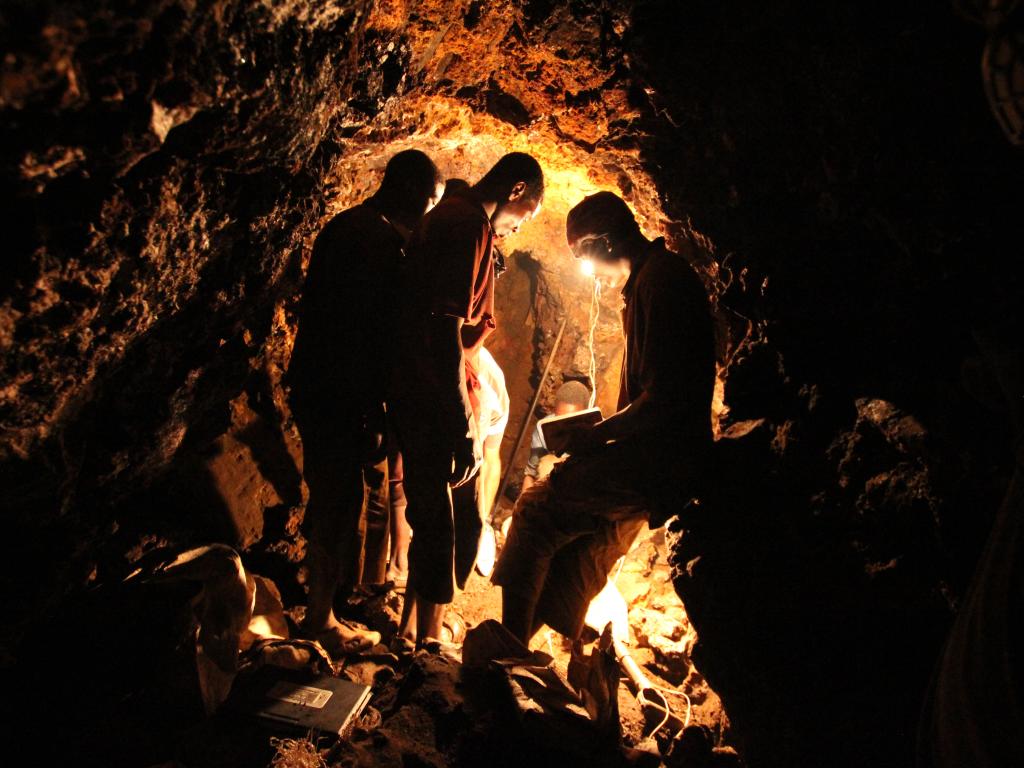Mining Permit granted to zamazamas – a step towards the formalisation of artisanal small-scale mining in South Africa

After years of illegally extracting diamonds in the Kimberley area, a group of zamazamaswas granted a mining permit by the Department of Mineral Resources (DMR). In addition, land on which they can mine was made available to them and arrangements will be made for them to sell their diamonds on the market. The DMR’s decision has received mixed reactions from mining analysts.
Zamazama is a term used for illegal miners in South Africa. It means, “try and try again”.[1]The term is often used interchangeably with “illegal miner”, “informal miner” and “artisanal miner”.[2]These miners generally operate illegally in abandoned or disused mine shafts in search of residual mineral resources that could not be accessed using machinery or proved unprofitable for major mining companies.[3]Although zamazamasuse simple methods and tools such a spades and iron bars to dig for minerals, their technical mining skills are more technical than basic artisanal mining activities.[4]Jinnah notes that zamazamashave often been linked to criminality and gangsterism. Thornton, however views them as entrepreneurs and job-creators who contribute to high levels of economic productivity within small communities, without help from the government.[5]
South Africa’s mining legislation, the Mineral and Petroleum Resources Development Act 28 of 2002 (MPRDA), does not formally recognise mining activity by zamazamas. The provision of a mining permit is the only mining title that regulates activities on a sub-industrial level. The mining permit was included in the MPRDA to accommodate small-scale miners. However, the cumbersome requirements in the provision do not encourage small-scale mining.[6]
Wilson argues that artisanal small-scale mining needs to be formalised. She maintains that the only way that government can support small-scale miners is by regulating their operations within a legal framework.[7]Formalisation will help ease the adverse environmental and health consequences of informal mining, and bolster its potential to be a driver of socio-economic change by reducing unemployment. Wilson suggests that the legal framework must distinguish between persons who work formally as artisanal small-scale miners and syndicate members who intentionally commit crimes.[8]
The DMR is making an effort to deal with the scourge of zamazamas by moving towards formalisation. On 7 June 2018, the DMR announced that it would be granting a mining permit to a group of approximately 2000 illegal diamond miners. The Deputy Mining Minister, Godfrey Oliphant stated that the efforts are part of the DMR’s plan to formalise artisanal small-scale mining. The permit was awarded to Kimberley Artisanal Mineworkers, a group of miners that has reportedly been extracting diamonds from a mining site owned by Kimberley Ekapa Mining Joint Venture (Ekapa Mining) for 16 years. Oliphant noted that the group would finally be recognised as a legal mining cooperative. Ekapa Mining has given the cooperative permission to mine for diamonds on 400 hectares of its land. The legal recognition means that the group will be allowed to sell their diamonds on the market to avoid their exploitation by third parties. Oliphant noted that being granted a permit was an achievement for the mining group, as their activities had long been considered illegal. Legitimisation by the DMR therefor gives effect to Wilson’s suggestion, mentioned above. Oliphant, however emphasised that the DMR would not grant permits to underground illegal miners who damage old mine shafts and have no concern for safety.
The DMR’s decision to grant the cooperative a mining permit has been met with mixed reactions from mining analysts. Van Wyk, on the one hand, welcomed the decision of the DMR. He posited that although the activities of artisanal miners are deemed illegal, these miners contribute to the economy by providing sustenance for themselves and their families. He stressed the importance of balancing the impact of the “crime” committed by illegal miners and the economic impact of removing their earnings from South Africa’s business cycle. According to Van Wyk, the artisanal miners’ activities caused minimal environmental impact as they use little water and produce an insignificant amount of waste. He encouraged the government to bolster its efforts to formalise and legitimise artisanal mining. Supporting small-scale miners can be achieved by organising the miners into legal business entities, such as cooperatives, and providing them with training. The creation of a central buying agency and formal supply chain would also help artisanal miners, in Van Wyk’s opinion.
Major, on the other hand, is sceptical of the DMR’s decision to recognise the zamazamas. He stated that a more comprehensive policy is needed to deal with the causes of illegal mining. The Minerals Council, previously known as the Chamber of Mines, stated that illegal mining activities undermine mine closure efforts by companies as zama zamas often reopen sealed shaft entrances.
Regardless of the perceptions that exist about zamazamas, they have very little recognition in law. The DMR’s decision to grant Kimberley Artisanal Mineworkers a mining permit is a step towards the formal recognition of artisanal small-scale miners. Major is correct in saying that a more comprehensive policy is required to legally recognise small-scale miners. What amendments will be made to accommodate small-scale miners in the MPRDA remains to be seen.
Written by Shamila Mpinga.
[1] L Wilson Unshackling South African artisanal miners: Considering Burkina Faso’s legislative provisions as a guideline for legalisation and regulation (unpublished LLM thesis, University of Cape Town, 2018) 8).
[2] Wilson 15.
[3] Wilson 8.
[4] Wilson 8.
[5] R Thornton 'Zamazama, “Illegal: artisanal miners, misrepresented by the South African Press and Government ' (2014) 1 The Extractive Industries and Society127.
[6] Wilson 164.
[7] Wilson 166.
[8] Wilson 167.
